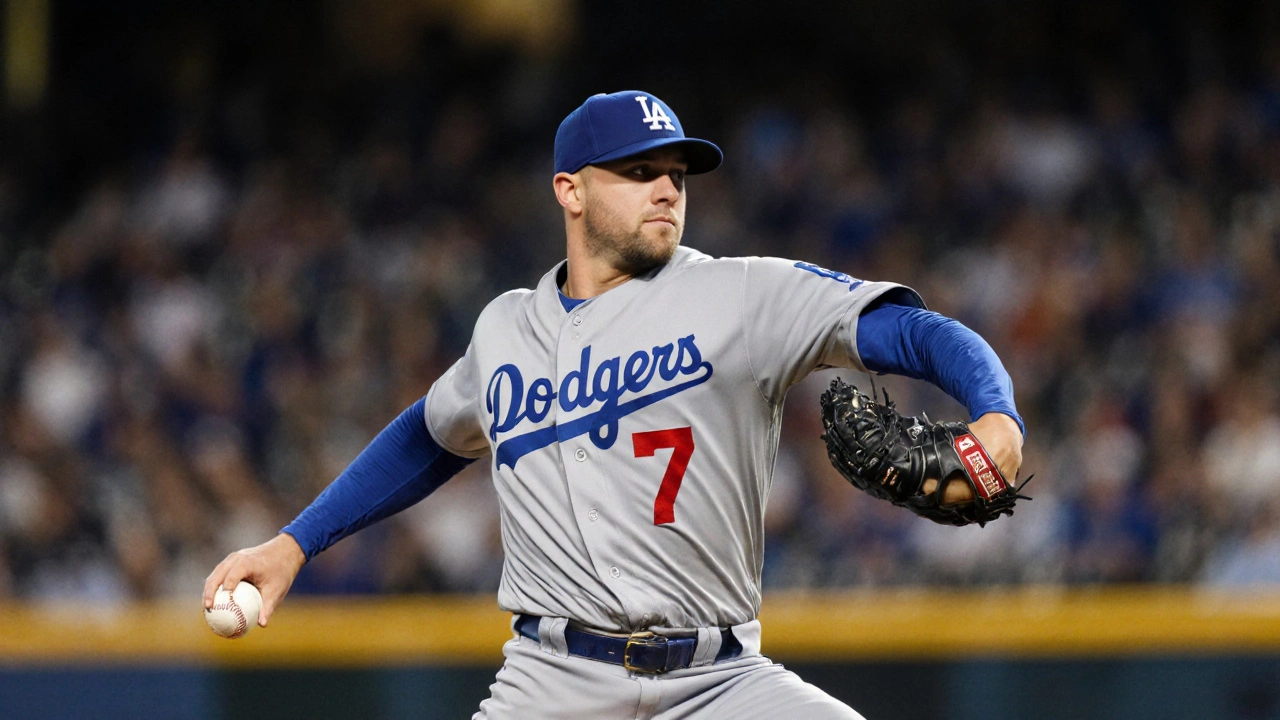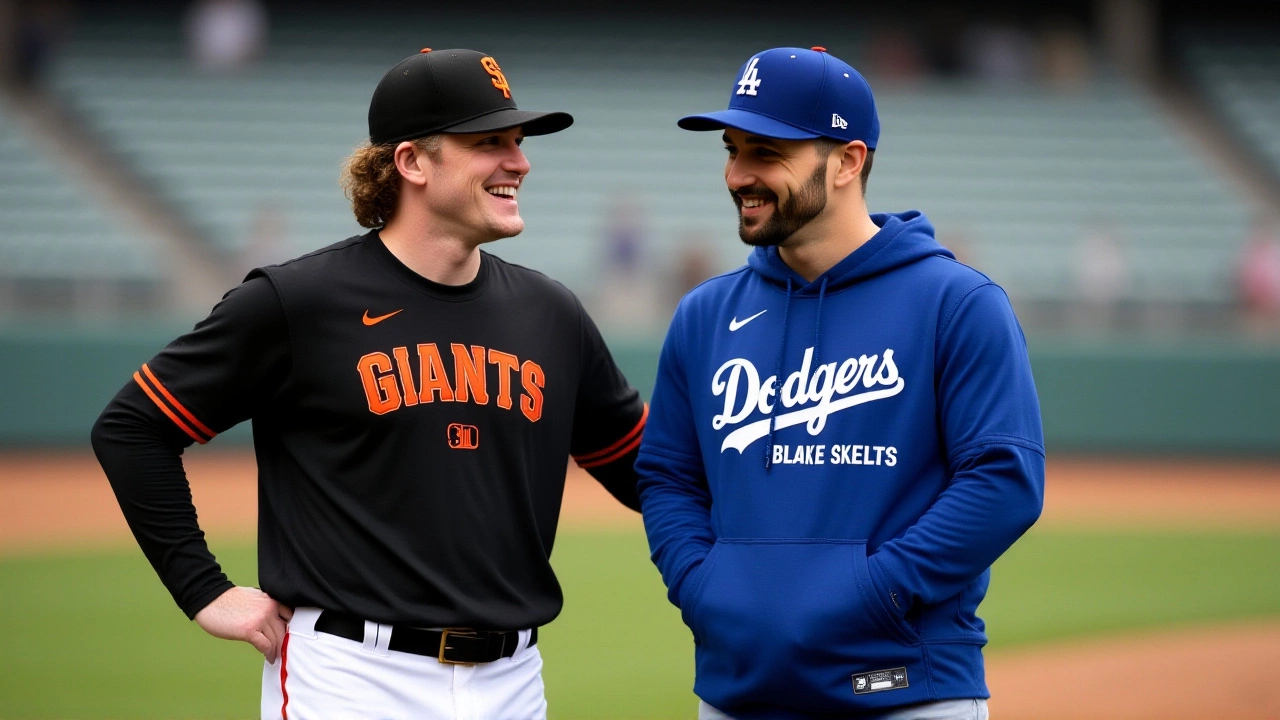When Blake Snell, starting pitcher for Los Angeles Dodgers stepped onto the mound at American Family Field in Milwaukee, Wisconsin on October 23, 2025, he silenced the chatter that’s haunted him for years. The veteran left‑hander, a two‑time Cy Young Award winner, publicly refuted the “wild pitcher” narrative that media outlets have clung to since his 2023 season, when he led MLB with a 13.3 % walk rate. In the opening game of the National League Division Series, Snell threw eight clean innings, allowed one hit, zero walks and struck out ten, proving the label is more myth than fact.
Background: From Rays to Dodgers
Snell’s journey to Los Angeles began in the 2024‑25 free‑agency period. After opting out of his contract with the San Francisco Giants, he inked a five‑year, $182 million deal with the Dodgers, a pact orchestrated by Andrew Friedman, the team’s President of Baseball Operations. The contract catapulted Snell into the elite tier of earners, reflecting the franchise’s record $1.1 billion payroll for the 2025 season.
Postseason Performance: Command Over Chaos
In the 2025 playoffs, Snell logged three starts—seven, six and eight innings—averaging 98 pitches per outing. His command improved dramatically; the walk‑free Game 1 effort was a stark contrast to the previous year’s free‑throw‑like walks. The changeup became his secret weapon, posting a 65.5 % whiff rate in the postseason, up from a 43.5 % regular‑season rate. Those numbers translate to roughly three missed bats per inning, a statistic that left opposing hitters bewildered.
Voices from the Dugout and Opponents
Dodgers manager Dave Roberts pulled Snell after 103 pitches, saying, “It was a 50/50 call—he’d be fresh for the next start.” The decision underscored the team’s strategic depth, with starters like Roki Sasaki and Tyler Glasnow ready to shoulder the load.
Snell’s former Giants teammate Logan Webb had been nudging him toward better "quality on misses" during the 2024 season. Webb told him, “When you’re in the zone, you’re the best pitcher in baseball.” That mentorship appears to have paid off, as evidenced by the razor‑sharp changeup.
Even opponents took note. Terry Francona, manager of the Cincinnati Reds, marveled, “He can vary his changeup from 82 to 87 mph in rapid succession. It’s like three different pitches in one.” Atlanta Braves first baseman Freddie Freeman added, “That speed range forces hitters to guess, and they rarely get it right.”
The Changeup Revolution: Stats That Speak
- Regular‑season changeup whiff rate (2025): 43.5 %
- Postseason changeup whiff rate: 65.5 %
- Walk rate drop from 13.3 % (2023) to 0 % in NLDS Game 1
- Average pitches per start in 2025 postseason: 98
- Strikeouts in Game 1 NLDS: 10 in 8 innings
Those figures reveal a pitcher who has reshaped his arsenal, turning a perceived flaw into a competitive edge.

Dodgers’ .1 Billion Bet: What It Means
The organization’s willingness to spend a record payroll signals a shift toward "win‑now" philosophy. By securing Snell, Friedman and Roberts sent a clear message: the Dodgers are not just building depth; they’re assembling a rotation that can dominate any postseason opponent. The financial muscle also allows for luxury‑tax flexibility, meaning the front office can retain key pieces like Yoshinobu Yamamoto without compromising future flexibility.
Looking Ahead: World Series Showdown
Snell has been named the starter for Game 1 of the 2025 World Series on October 25, 2025, a slot that places him at the forefront of Dodgers’ championship hopes. If he maintains his current command, the Dodgers could rewrite the narrative once and for all. The broader baseball community will be watching: a former “wild” pitcher turning into the ace of a $1.1 billion roster could redefine how teams evaluate talent and contract value.
Frequently Asked Questions
How does Blake Snell’s improved command affect the Dodgers’ chances in the World Series?
Snell’s walk‑free performances and elevated changeup whiff rate give Los Angeles a reliable ace for crucial games. With a 0 % walk rate in the NLDS and a 65.5 % changeup miss rate, he reduces the likelihood of early‑inning rallies, allowing the Dodgers’ offense to stay ahead. That stability dramatically boosts their odds in a best‑of‑seven series where a single bad start can swing momentum.
What led to the ‘wild pitcher’ label originally, and why is it considered inaccurate now?
The tag stuck after Snell’s 2023 season, when he topped MLB with a 13.3 % walk rate—a metric often equated with lack of control. However, his recent postseason stats show zero walks and a disciplined pitch count, indicating the walks were an outlier rather than a chronic flaw. Adjustments advised by Logan Webb and refined mechanics have effectively erased the myth.
How does Snell’s contract compare to other top pitchers in 2025?
At $182 million over five years, Snell ranks among the top‑five earners, alongside the likes of Gerrit Cole and Max Scherzer. The deal reflects both his Cy Young pedigree and the Dodgers’ willingness to invest heavily in elite arms, a trend observed across several high‑paying markets this season.
What role did Logan Webb play in Snell’s turnaround?
Webb, a fellow left‑hander and former Giant, urged Snell to focus on "quality on misses," emphasizing pitch location over velocity. By tightening his changeup and honing command, Snell reduced free passes and increased swing‑and‑miss rates, a shift evident in the postseason metrics.
Will the Dodgers keep their $1.1 billion payroll after 2025?
Analysts predict the front office will stay aggressive, especially if the World Series win validates the spending. However, luxury‑tax penalties could prompt modest adjustments in 2026, focusing on retaining core talent while balancing long‑term financial flexibility.

